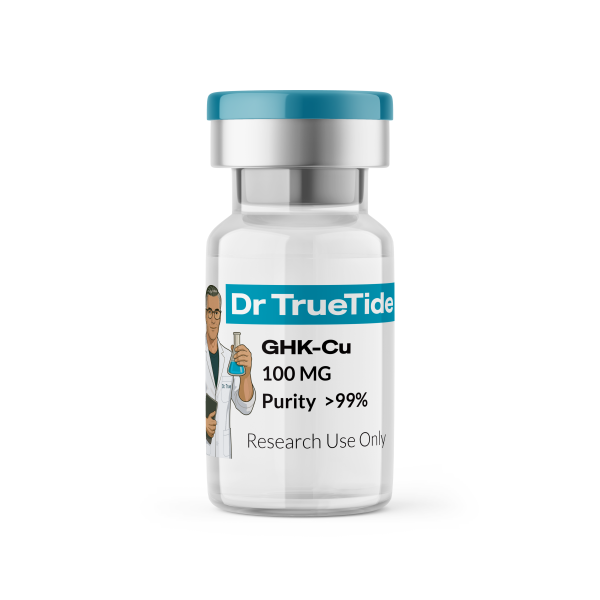
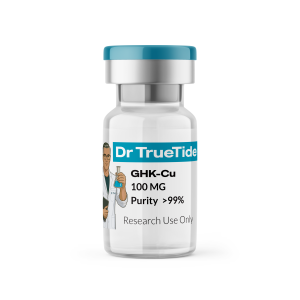
GHK-Cu Copper Peptide
$70.00
Note: Peptides will arrive in a lyophilized (powder) form for maximum stability.
GHK-Cu is a naturally occurring copper-binding peptide recognized for its remarkable regenerative effects on skin, hair, and connective tissues. Research has shown that GHK-Cu can stimulate collagen and elastin production, accelerate wound healing, reduce fine lines and wrinkles, promote hair growth, and even aid tissue repair across multiple organ systems. Its ability to naturally reactivate the body’s repair mechanisms makes it a cornerstone peptide in anti-aging, dermatological, and regenerative science¹.
Need Help? Chat with an Expert
Money Back Guarantee
Free Shipping & Returns
Online Support 24/7
Secure Payment
Product Details
- Chemical Identity and Properties
- Primary Uses and Effects
- Notable Scientific Studies
- Emerging and Future Research Directions
- Sources
- Disclaimer
1. Chemical Identity and Properties
- CAS Number: 89030-95-5
- Molecular Formula: C₁₄H₂₂CuN₆O₄
- Molar Mass: 403.90 g/mol
- Synonyms: Glycyl-L-histidyl-L-lysine copper, Copper Tripeptide-1, GHK-copper complex
- Sequence: Gly-His-Lys
- PubChem CID: 16219496
2. Primary Uses and Effects
Skin Regeneration and Anti-Aging
GHK-Cu plays a vital role in stimulating collagen types I and III, elastin, proteoglycans, and glycosaminoglycans, all of which contribute to youthful, resilient skin². By encouraging the replacement of degraded structural proteins, GHK-Cu improves skin firmness, elasticity, and thickness, leading to visibly fewer wrinkles, smoother texture, and enhanced skin tone³. Research has also shown that GHK-Cu reduces hyperpigmentation and reverses photodamage by enhancing skin cell repair mechanisms⁴. Additionally, it modulates matrix metalloproteinases (MMPs), reducing tissue breakdown and preserving the extracellular matrix⁵.
Hair Growth and Follicle Support
In studies on human scalp follicles and dermal papilla cells, GHK-Cu has been found to prolong the hair follicle’s anagen (growth) phase, increase follicle size, and enhance vascular supply to the follicle through upregulation of VEGF⁶. This action creates a healthier, more supportive environment for hair growth. GHK-Cu also appears to counteract miniaturization of hair follicles—a hallmark of androgenetic alopecia (pattern hair loss)—by reducing inhibitory signaling molecules like TGF-β1⁷. As a result, GHK-Cu is widely researched for its role in promoting thicker, stronger hair and slowing down hair loss.
Wound Healing and Scar Reduction
GHK-Cu’s regenerative effects extend deeply into wound healing. It promotes angiogenesis, fibroblast migration, and collagen synthesis at injury sites⁸. Importantly, GHK-Cu balances inflammation by regulating cytokines and reducing oxidative stress, which leads to faster healing with reduced scarring⁹. Studies have shown that wounds treated with GHK-Cu have stronger, better-organized tissue regeneration, indicating higher-quality healing compared to untreated controls¹⁰.
Anti-Inflammatory and Antioxidant Actions
GHK-Cu reduces chronic inflammation by downregulating pro-inflammatory cytokines (such as TNF-α and IL-6) and by modulating macrophage polarization toward the M2 healing phenotype¹¹. In addition, GHK-Cu acts as an antioxidant enhancer by delivering bioavailable copper to activate enzymes like superoxide dismutase (SOD), protecting cells from oxidative damage¹². These dual anti-inflammatory and antioxidant effects help prevent tissue breakdown and maintain a regenerative environment in both skin and systemic tissues.
Systemic Regenerative Effects
Beyond topical benefits, GHK-Cu has demonstrated broader systemic properties. It has shown protective effects in models of lung injury, liver fibrosis, bone repair, and nervous system recovery¹³. In damaged tissues, GHK-Cu helps modulate gene expression to favor healing, reduce fibrosis, and promote tissue remodeling—a promising attribute for future regenerative therapies.
3. Notable Scientific Studies
Collagen Synthesis Stimulation (Maquart et al., 1988)
In an early landmark study, GHK-Cu was shown to dramatically stimulate collagen production in human fibroblasts at extremely low concentrations¹¹. Treated cells produced significantly higher levels of type I and III collagen without increasing cell proliferation, suggesting GHK-Cu’s direct action on matrix restoration and anti-aging pathways.
Accelerated Healing of Ischemic Wounds (Canapp et al., 2003)
In a rat model of compromised (ischemic) skin wounds, GHK-Cu-treated wounds healed 2–3 times faster than placebo. Histological analysis showed denser collagen deposition, fewer inflammatory cells, and greater capillary formation in peptide-treated tissues¹². This study highlighted GHK-Cu’s ability to drive high-quality healing even in poor-healing conditions.
Skin Rejuvenation in Clinical Trials (Lupo et al., 2005)
A 12-week clinical study on women with photodamaged skin showed that topical GHK-Cu creams led to increased skin density, improved elasticity, and reduced wrinkles and fine lines compared to placebo¹³. Histological biopsies confirmed greater collagen content and better dermal matrix organization in treated areas.
Hair Follicle Regeneration (Pyo et al., 2007)
In vitro studies on human hair follicles demonstrated that GHK-Cu stimulated dermal papilla cell proliferation, increased follicle size, and enhanced hair fiber growth⁶. GHK-Cu also upregulated growth factors critical for follicular health, indicating strong potential for use in hair regrowth therapies.
Gene Expression Modulation (Pickart & Margolina, 2018)
Recent genomic studies reveal that GHK-Cu can reset expression of hundreds of human genes toward a regenerative profile. Specifically, it promotes genes linked to tissue repair while downregulating genes associated with inflammation, cancer spread, and fibrosis¹⁴. This broad gene modulation suggests therapeutic potential far beyond cosmetic use.
4. Emerging and Future Research Directions
Regenerative Medicine Applications
GHK-Cu’s ability to enhance stem cell activity, promote organ regeneration, and reverse fibrotic gene profiles is opening avenues in regenerative medicine¹⁴. Researchers are investigating its use for treating chronic wounds, pulmonary fibrosis, and liver cirrhosis, where it could help restore damaged tissues without scarring.
Neuroprotection and Cognitive Enhancement
GHK-Cu’s protective effects on neurons and its ability to modulate oxidative stress make it a candidate for neuroregenerative therapies. Early animal studies suggest it may help improve cognitive function after injury, offering a potential role in future treatments for stroke recovery, traumatic brain injury, or even age-related cognitive decline¹⁵.
Cancer and Anti-Metastatic Research
Emerging data suggest that GHK-Cu may inhibit cancer metastasis by shifting tumor gene profiles toward a less aggressive, more differentiated state. Although this research is preliminary, it suggests a possible role for GHK-Cu in future anti-cancer strategies that focus on genetic reprogramming rather than cytotoxicity¹⁴.
Advanced Delivery Technologies
To maximize the therapeutic potential of GHK-Cu, scientists are developing liposomal encapsulation, ionic liquid microemulsions, and sustained-release platforms¹⁶. These innovations aim to enhance bioavailability, improve tissue penetration, and maintain peptide stability for broader medical applications, including injectable, topical, and implantable formulations.
5. Sources
- Pickart L, Margolina A. Resetting Skin Genome Back to Health Naturally with GHK. Textbook of Aging Skin. Springer, 2015.
- Maquart FX, et al. Stimulation of collagen synthesis in fibroblast cultures by GHK-Cu. FEBS Letters. 1988;238(2):343–346.
- Pickart L, Margolina A. GHK-Cu and Tissue Regeneration. Int J Mol Sci. 2018;19(7):1987.
- Pickart L, Margolina A. The Human Tripeptide GHK and Tissue Remodeling. J Biomater Sci Polym Ed. 2016;27(2):98–112.
- Pyo HK, et al. The effect of copper tripeptide on human hair growth in vitro. Arch Pharm Res. 2007;30(7):834–839.
- Liu T, et al. GHK-Cu promotes hair growth via Wnt/β-catenin signaling activation. PeerJ. 2022;10:e12914.
- Canapp SO, et al. GHK-Cu complex promotes wound healing. Vet Surg. 2003;32(6):515–523.
- McCormack CJ, et al. Copper peptide complexes accelerate healing. Wound Repair Regen. 2001;9(6):396–403.
- Gwyer D, et al. Copper Peptides and Inflammation Resolution. Cell Tissue Res. 2019;377(1):153–159.
- Pickart L, Margolina A. Antioxidant defenses boosted by GHK-Cu. Int J Mol Sci. 2021;22(9):4890.
- Maquart FX, et al. GHK-Cu stimulates collagen production in fibroblasts. FEBS Letters. 1988;238(2):343–346.
- Canapp SO Jr, et al. Topical GHK-Cu improves wound healing. Vet Surg. 2003;32(6):515–523.
- Lupo MP, et al. Topical copper peptide enhances facial skin appearance. Dermatol Surg. 2005;31(8 Pt 2):S816–S819.
- Pickart L, Margolina A. GHK-Cu in gene regulation and tissue regeneration. Int J Mol Sci. 2018;19(7):1987.
- Pickart L, Margolina A. GHK-Cu in neurodegenerative protection. OBM Neurobiology. 2019;3(2):1–17.
- Liu T, et al. Advanced delivery methods for GHK-Cu. Pharmaceutics. 2022;14(5):1053.
6. Disclaimer
GHK-Cu is for research use only. It is not approved by the FDA or any regulatory agency for human or veterinary use, consumption, or therapeutic applications of any kind. By purchasing this product, you agree to our Terms and Conditions.
Only logged in customers who have purchased this product may leave a review.
No Minimum Purchase - Free Shipping On All Orders -
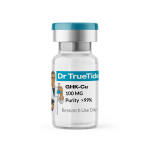
GHK-Cu Copper Peptide
$70.00



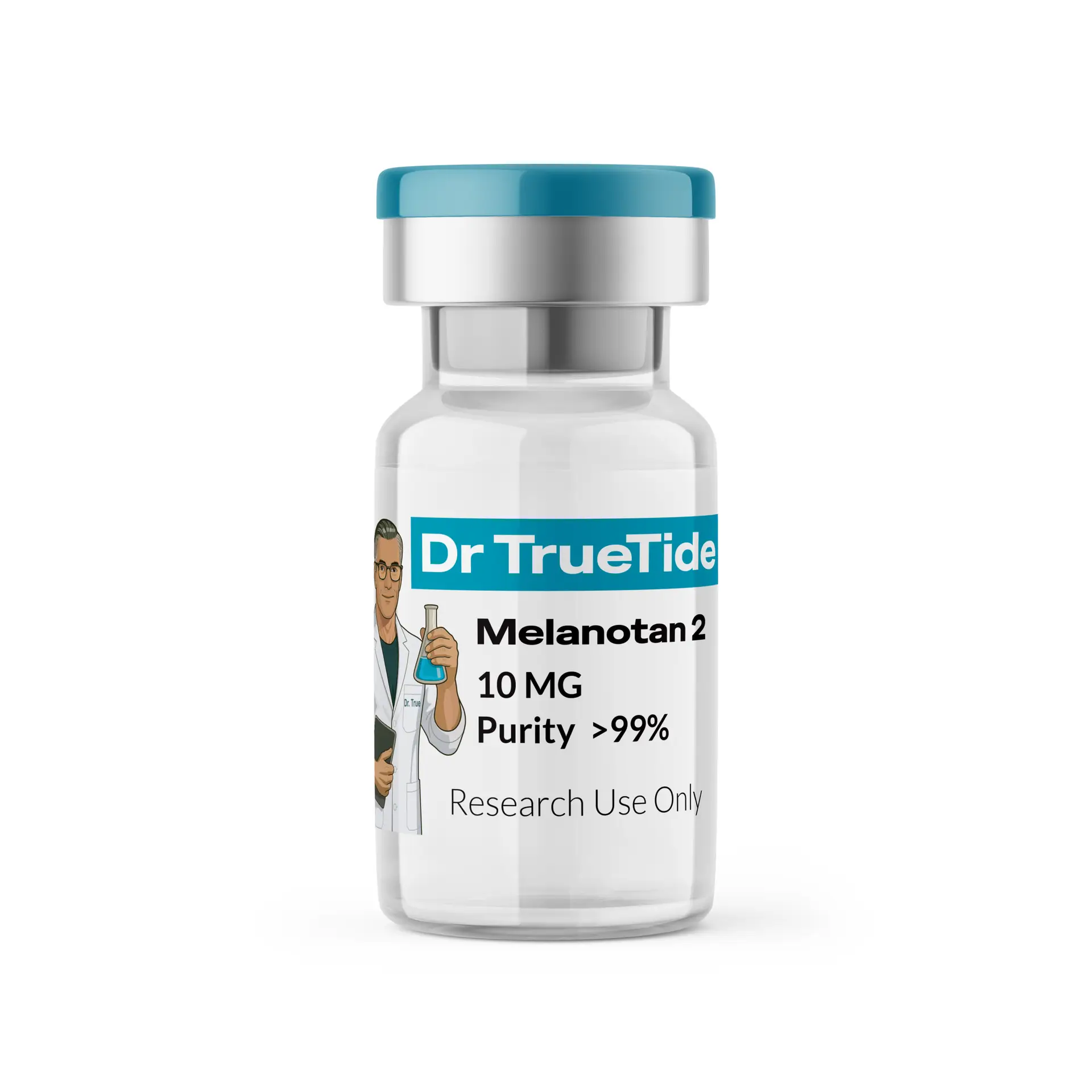

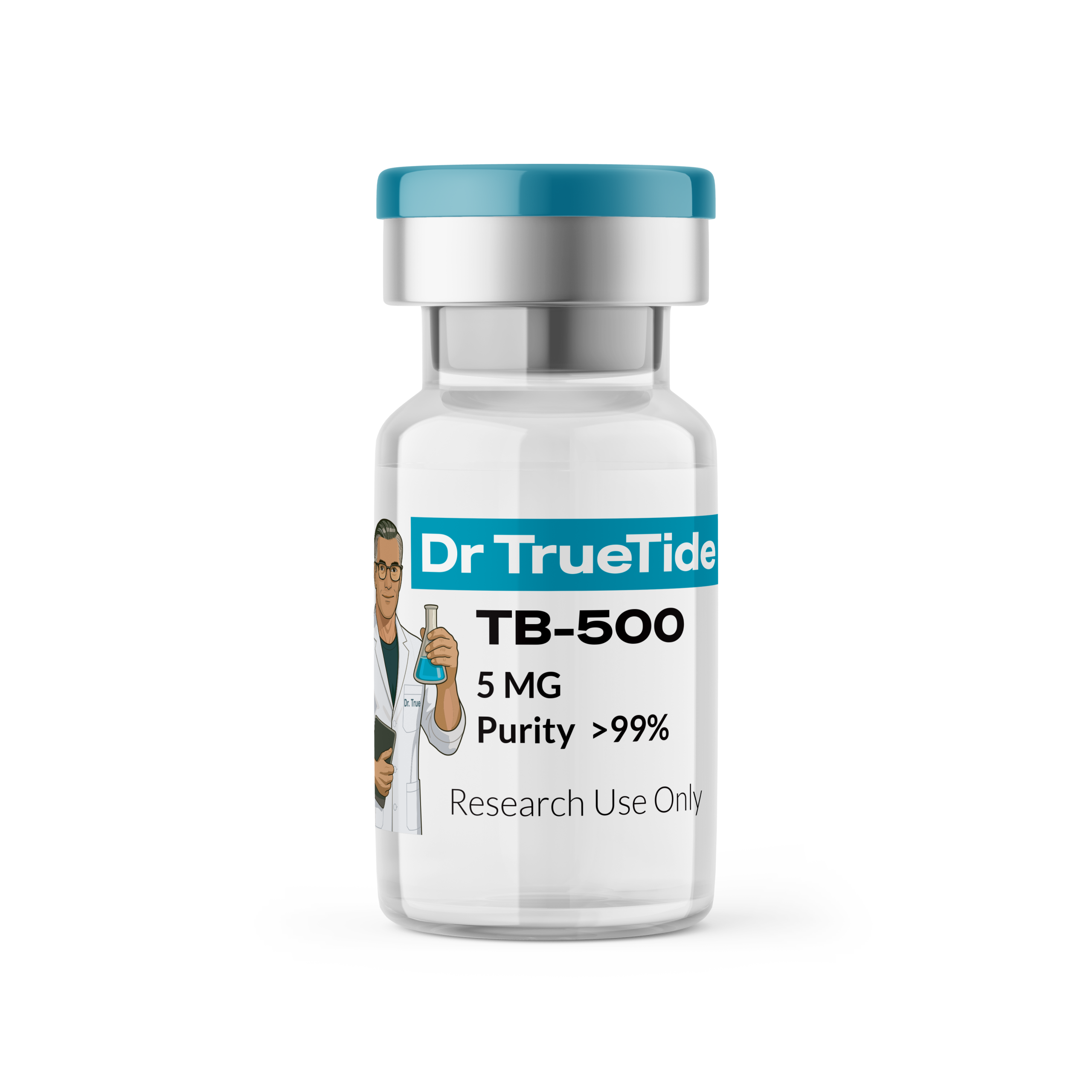
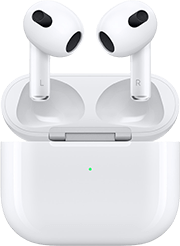

Reviews
There are no reviews yet.